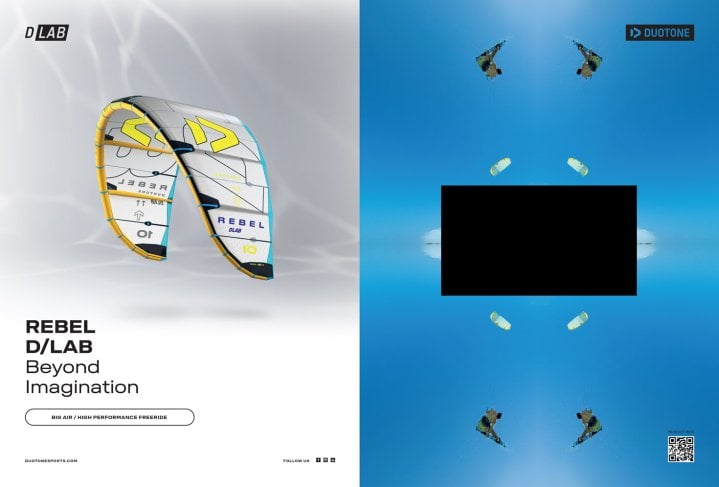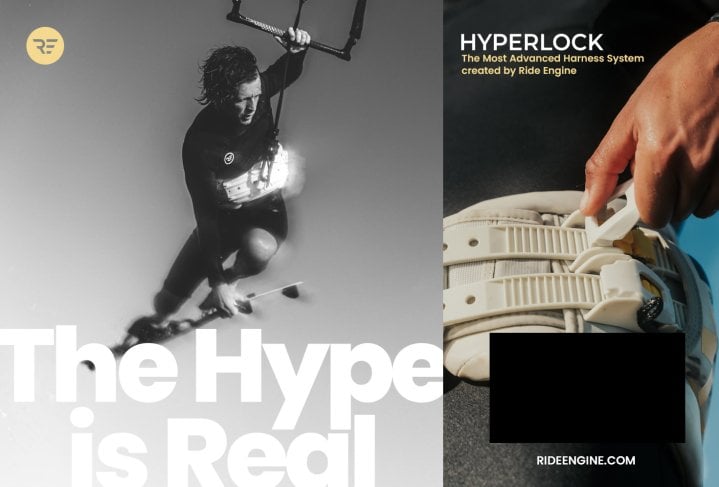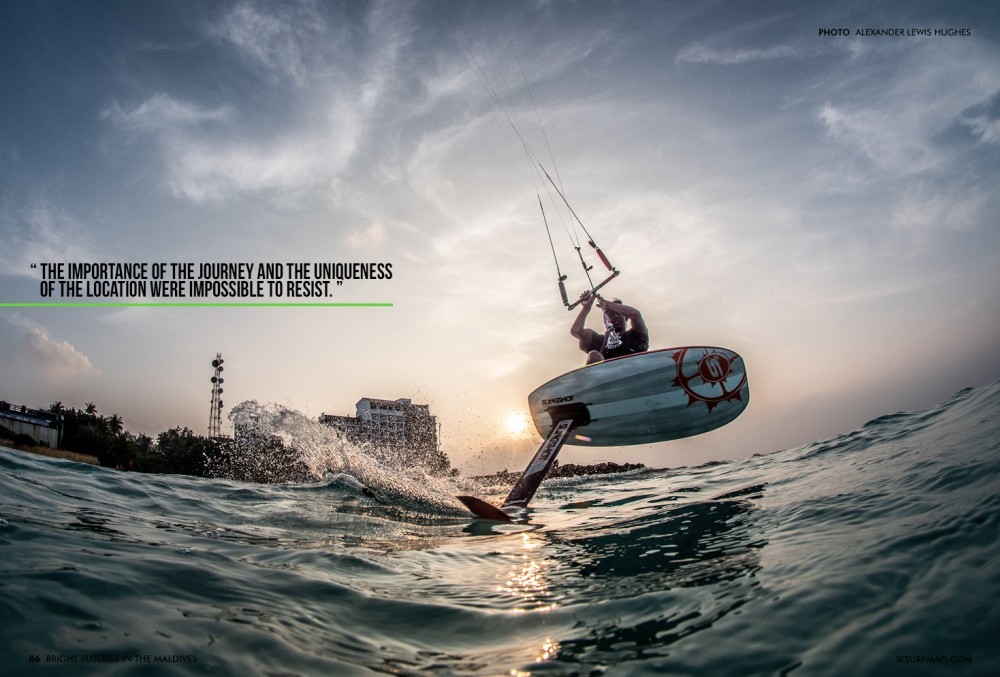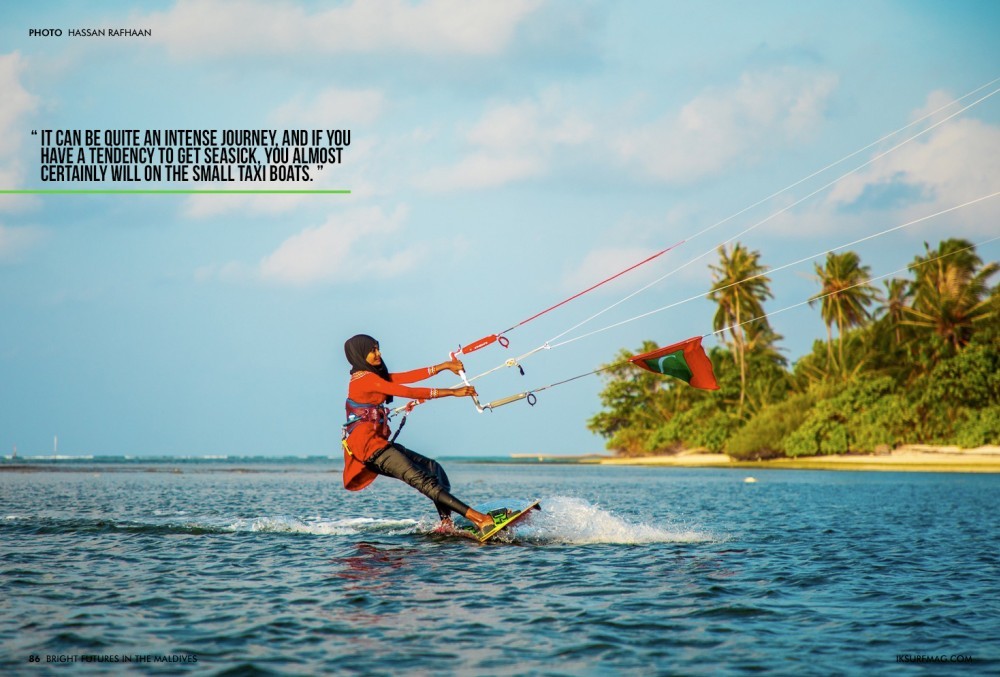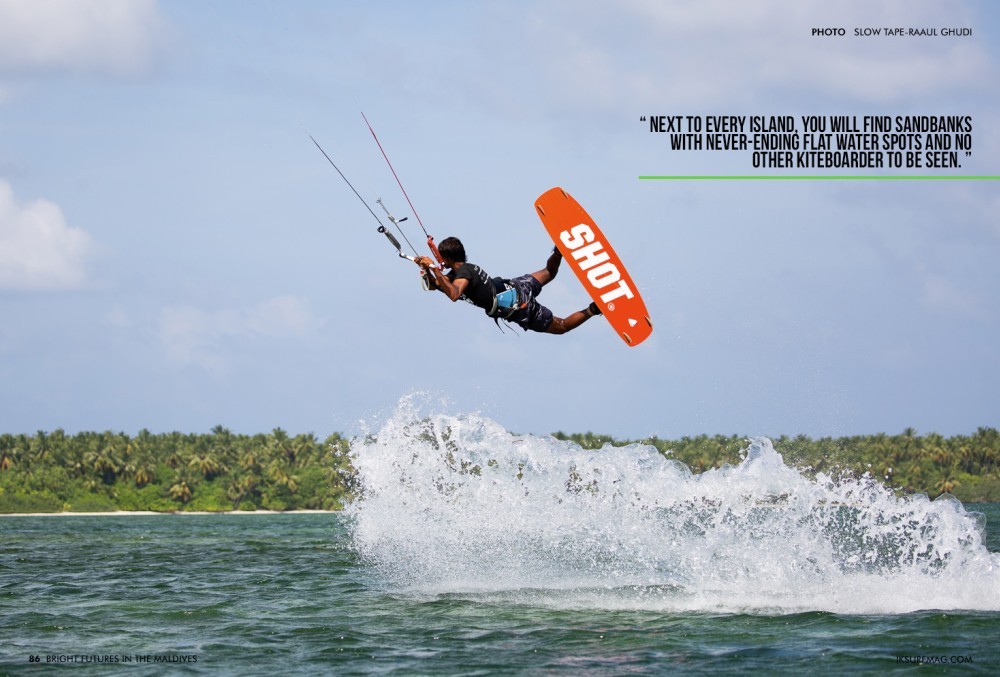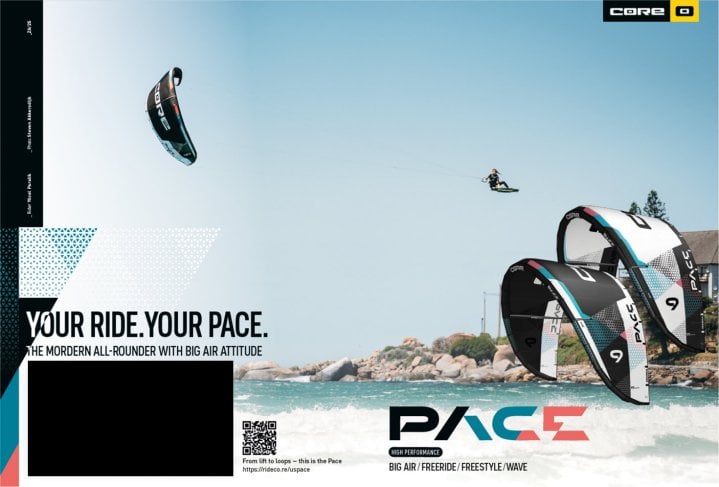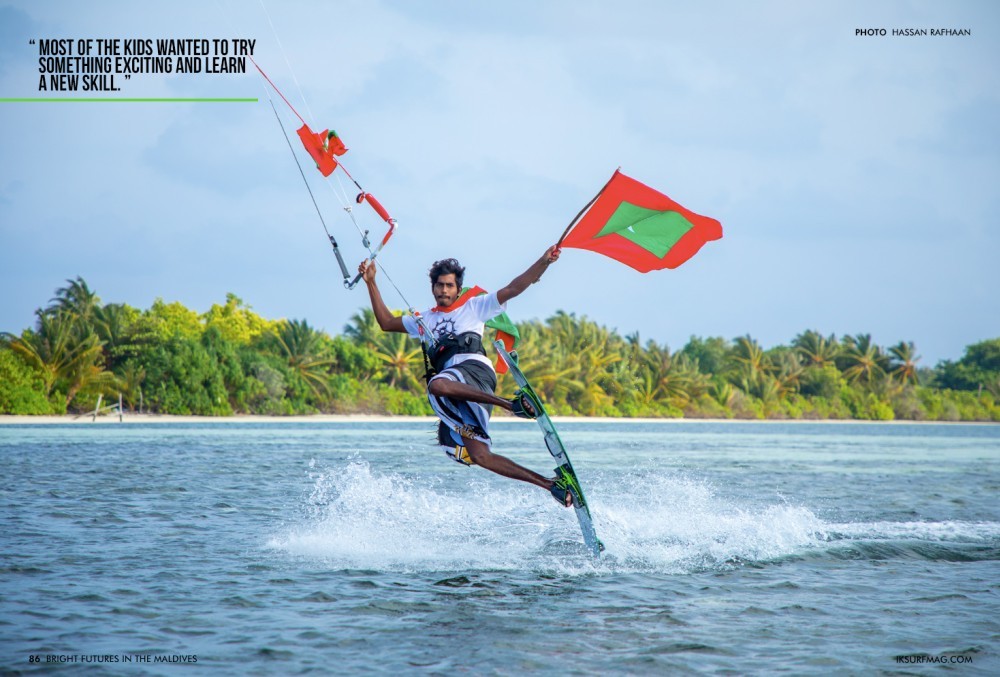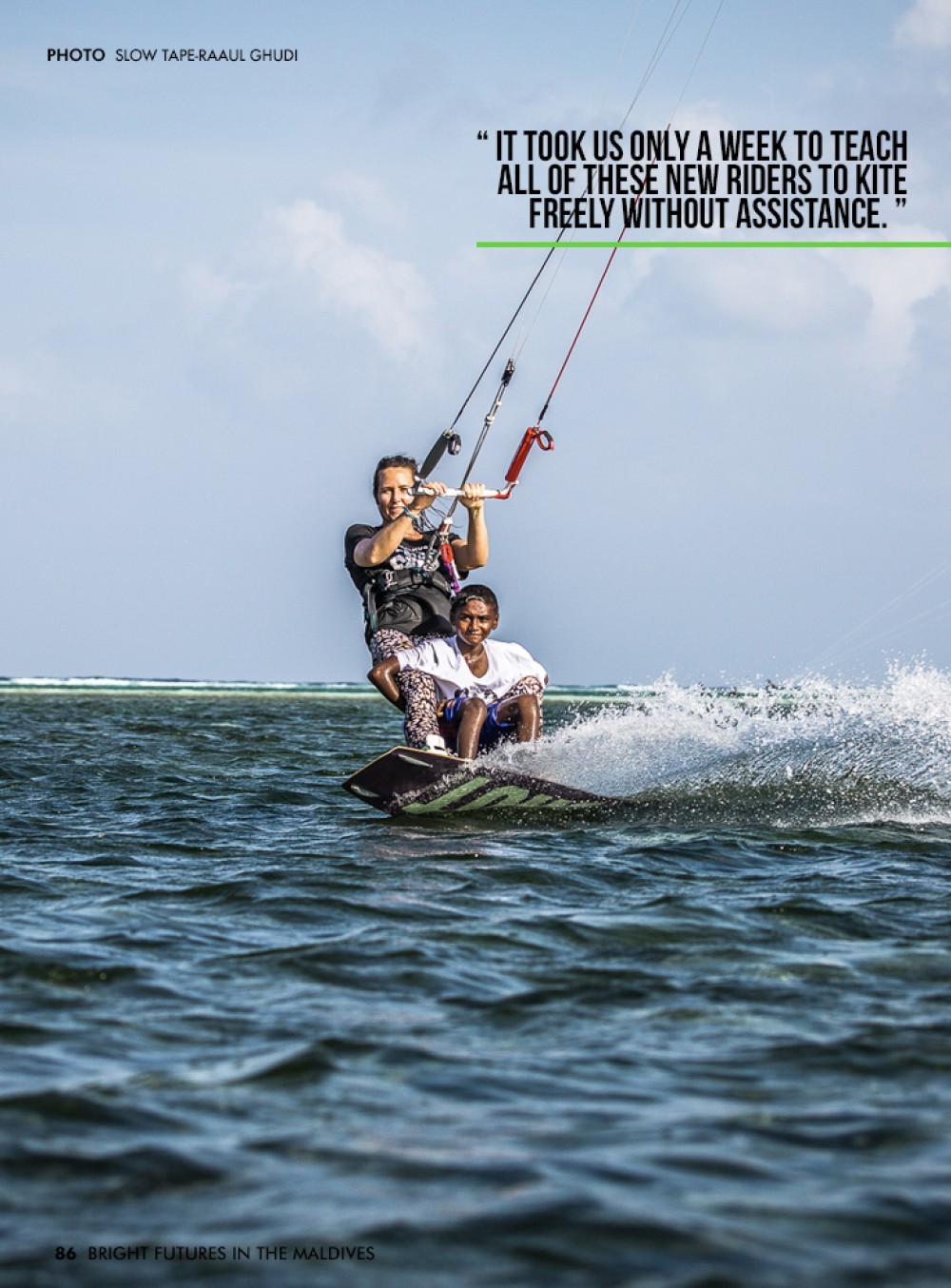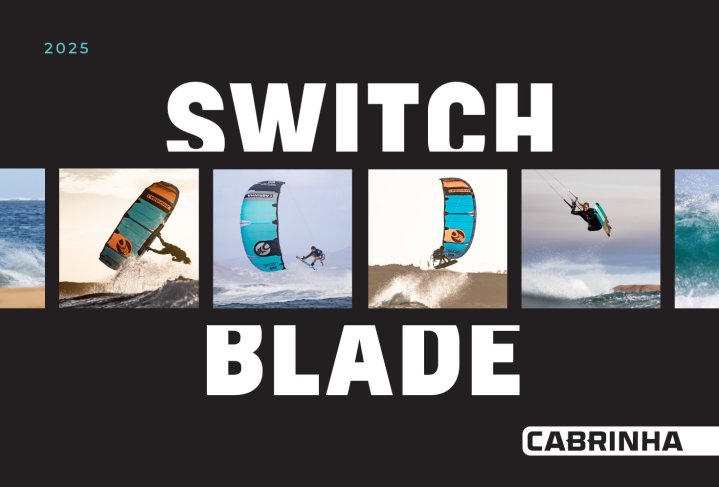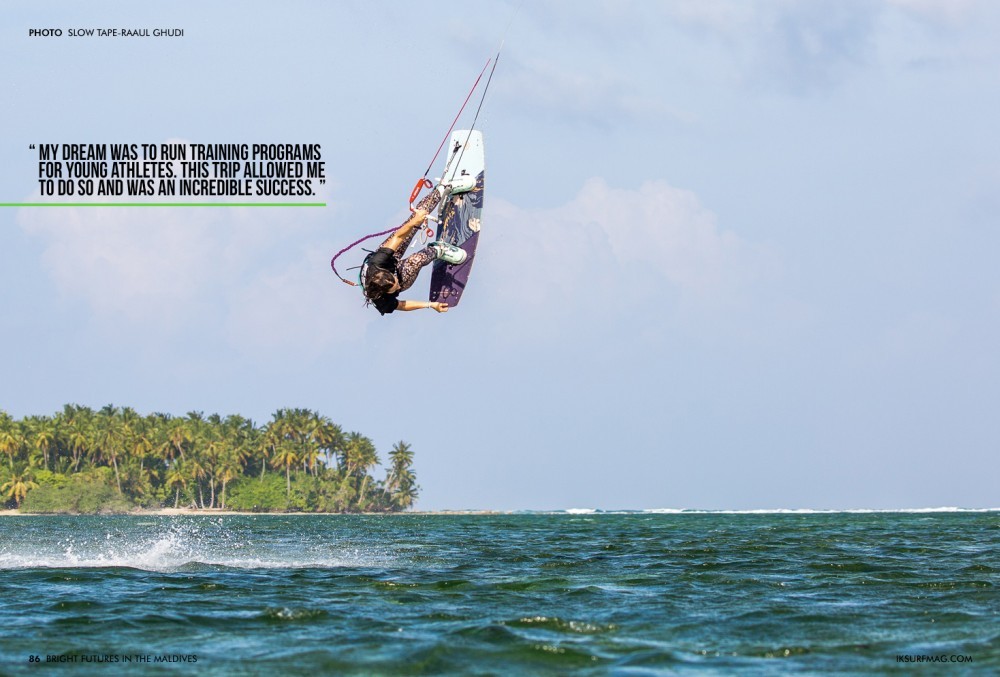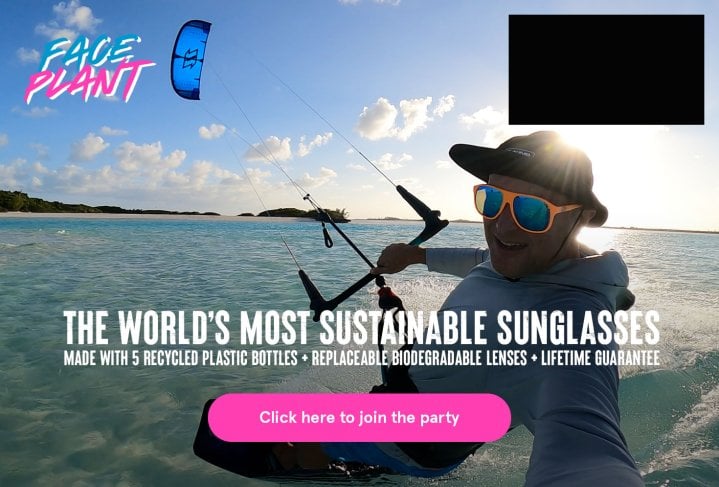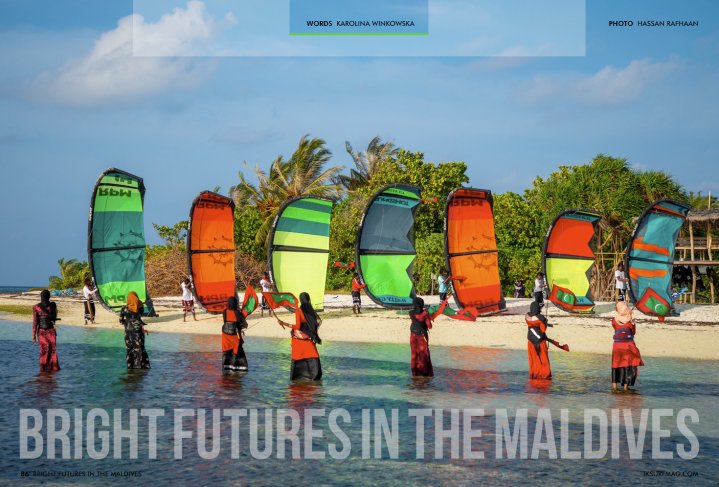
Bright Future In The Maldives
Issue 86 / Tue 13th Apr, 2021
Finding fulfilment as a professional kiteboarder doesn't always come from standing atop the podium. While World Champion is a title that Karolina Winkowska is immensely familiar with, sharing the stoke with other young kiters is a different version of success. Read about her mission in the Maldives in this article!
After finishing the Kite Park League 2019 season in Brazil in September, I planned to take a break from travelling to clear my mind after a tough competition season. I had expected to stay in Australia to train in freestyle until the 2020 tour began. That plan didn't last for long!
I was invited to come to the Maldives on behalf of the Minister of Youth, Sports, and Community Empowerment, Mr Ahmed Mahloof. Not only would I visit the Maldives, but I would also be teaching local kids how to kite on the island of Goidhoo and promote kiteboarding in the nearby resorts. The importance of the journey and the uniqueness of the location were impossible to resist. I was ready to go to the Maldives for a one of a kind adventure!
I have a few friends who go to this island chain every year for kiteboarding, so I knew the wind would be light this time of year. To be sure I wouldn't miss a session, I packed my 14m and 12m kite and a hydrofoil. I was also excited to try a new piece of gear I had just received, the Sci-Fly from Slingshot. It's a cut-off nose surfboard that conveniently fits inside my twin tip board bag.
Little did I know that it would be my last trip before the entire world went into lockdown. I travelled to the Maldives in the middle of January 2020. My connecting flight was in Rome, and I left the airport to see the Fontana di Trevi, which was always my dream to visit. The COVID-19 virus was first confirmed to have spread to Italy at the end of January 2020, when two tourists in Rome tested positive for the virus. It's strange to think that my trip to the Maldives could have ended so differently. I was lucky enough to make it to paradise before everything changed.
When I landed in the capital of Malé, I was anxious. It struck me that I had not been to a new country for so many years! My recent travels have been to the same spots over and over again to train and compete. These are places I know like the back of my hand. I know exactly what kite gear, clothes, and visas I need. Coming to the Maldives was a completely new experience.
The day before my flight, I was notified that walking in a bikini and drinking alcohol are forbidden in the Maldives. It was strange for me to comprehend this, as all the images I had seen of the Maldives were girls in bikinis drinking fancy drinks in the infinity pool. It turns out that this is only true in private resorts and on yachts, neither of which were on my travel itinerary! Luckily, I had enough time to pack an extra pair of Sensi Graves kiteboarding leggings and long sleeves, so I could cover my legs and arms in places where it was needed.
The next surprise was when the hotel came to pick me up from the airport. Instead of a car or taxi pickup, they sent the hotel's boat! I suppose the only possible way to travel between all the small Maldivian islands is by boat. The main island of Malé is a densely populated city that covers the entire island. When travelling from one island to another, you often have to take a boat to Malé before continuing to another island. It can be quite an intense journey, and if you have a tendency to get seasick, you almost certainly will on the small taxi boats.
There are a few different types of islands you can visit. Some islands have no hotels and have only a few local inhabitants. There are tourist islands that have both hotels and living areas for the locals. The last type is the private resort islands, where the island is owned by the hotel, and it is designed completely for tourists. People usually choose to visit this type of island on holiday, where you can stay in a hut over the water and sip your cocktail without a worry!
During my visit, I stayed on five islands and got to see all different types of places. Honestly, the ones with the least infrastructure were the most chilled and tropical for me. I also noticed that the wind was better on the islands with wild forests instead of dense buildings.
It is a dream destination for kiteboarding. On top of being a stunning tropical environment, many islands are located inside the reef lagoons. That means flat water on the inside and waves at the edge of the reef. Next to every island, you will find sandbanks with never-ending flat water spots and no other kiteboarder to be seen. The wind is better for bigger kites, but these are the conditions I really enjoy.
We travelled to an island called Goidhoo for the kids coaching program. Some of the local kids were already kiteboarding! In the Maldives, kiteboarding is a relatively new sport. Many of the local riders said it only began there in 2016. Now, a few kiteboarding shops have appeared on the main island and kite schools have opened up in tourist areas. One of the kite schools on Maafushi island distributes Slingshot kites. Since they started operating, they have been teaching kiting, promoting the sport in the local communities, and hosting events like Raalhu Gudi.
The Maldives is such a remote destination that the kids often learn kiteboarding from YouTube videos. There are few other ways for them to get tips! With so few kiters to share a session with, it can be hard to progress.
A few years before my visit, Youri Zoon travelled to the Maldives to give the first local riders some inspiration for progression! During his visit, he saw that one of the kids from Ghoidoo had an unbelievable kiting level. Hassan Mahir, aka Hantey, was noticed and got sponsored by Slingshot after that trip!
I was invited to join the program supported by the Minister of Youth, Sports, and Community Empowerment, Mr Ahmed Mahloof, and deputy Mohamed Azmeel. It was a kiteboarding program designed for the kids from Goidhoo island to learn kiteboarding in-between their school classes. Only if they wanted to, of course!
We had 25 participants, half of them female under 16 years old. There were a few tiny boys that were just 10, and also a few older ones. Most of the kids wanted to try something exciting and learn a new skill.
The Ghoidoo island is a fantastic spot for kiteboarding, so continuing to kite after our program would be a lot of fun for the local community. The Maldives' primary industry is tourism, and many people work in resorts all over the country. Learning to kiteboard is an opportunity to find a solid job in a watersports centre or kite school, especially with more and more opening in these resorts.
On most small islands like Ghoidoo, people don't really practice sport for leisure because they don't have the equipment or knowledge. It was incredible to give these kids the opportunity to try something new and have fun outside of school through this program.
Many kiteboarders came from other islands to join the project and help teach the children how to ride. My role was to inspire the kids by showing them the potential of kiteboarding and how far you could go with this sport. It took us only a week to teach all of these new riders to kite freely without assistance. At the end of my stay, we did a show for the Minister. He was so impressed by the fast progression and potential, he offered to buy five brand-new kites and boards so the kids could continue improving in the sport!
We saw some real potential in these talented riders. For some, kiteboarding could be a great opportunity to travel the world, find new possibilities, and enjoy life to the fullest.
This mission was close to my heart because kiteboarding changed my life 16 years ago. I started kiteboarding in my little country of Poland. When I was 18, I turned pro and travelled the world to train and compete. I saw some of the most beautiful locations, met the most amazing people along the way, won the worlds biggest kiteboarding events, and felt fulfilled every day of my life.
When I was younger, I always looked to better athletes and people around me to progress. Because there aren't any training facilities for freestyle kiteboarding, it was hard to find riders to meet up with. In fact, most of the time, I was riding on my own and had to come up with many tricks and training procedures without any help. For young riders, the support of older riders is necessary. Without it, many upcoming talents could lose interest and stop. What an unfortunate outcome that would be!
Ever since I finished my competitive career, my dream was to run training programs for young athletes. This trip allowed me to do so and was an incredible success. Watching these kids learn to kite, find a new passion, and gain new possibilities for the future was very emotional for me. I hope to continue helping riders from all over the world progress with the new training programs I've developed, and I wish all the best to the Maldivian kids. I really hope to come back one day and work on some more advanced tricks with them!
Videos
By Karolina Winkowska


